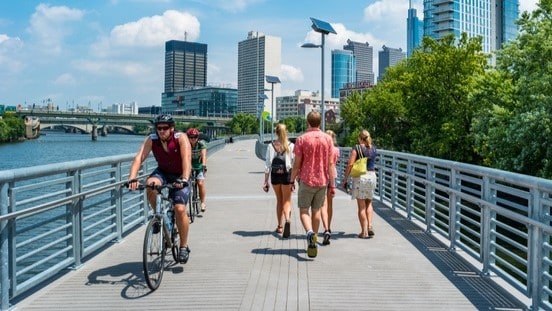At a glance
This module helps users assess the plans, policies, environments, and resources for infrastructure to accommodate pedestrians and bicyclists. This may include paved and unpaved paths, bicycle lanes, wide paved shoulders, bicycle routes, and sidewalks.

About this module
Who should be involved: Experts with knowledge of the community's pedestrian and bicycle infrastructure plans, policies, and resources. This includes experts in:
- Planning
- Transportation
- Public works
Time to complete: It will take approximately 2 hours and 30 minutes (150 minutes) to complete all sections of Module 2.
Module 2 sections
Module 2 has three sections:
- Section A—Infrastructure to Accommodate Pedestrians and Bicyclists
- Section B—Infrastructure to Accommodate Pedestrians
- Section C—Infrastructure to Accommodate Bicyclists
If you are interested in improving infrastructure to accommodate pedestrians and bicyclists, you should complete all sections.
If you are mainly interested in improving infrastructure to accommodate pedestrians or want to enhance this portion of your plan, complete sections A and B.
If you are mainly interested in improving infrastructure to accommodate bicyclists or want to enhance this portion of your plan, complete sections A and C.
